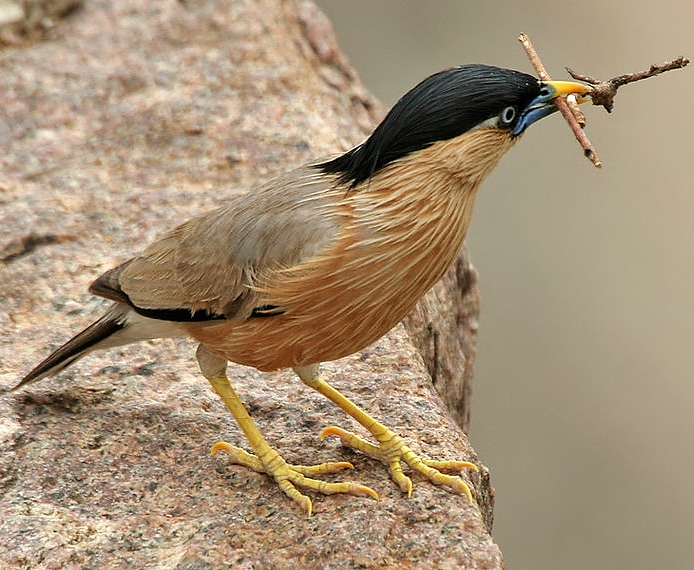 |
| Photo by J.M. Garg (Wikipedia) |
Common name:
Brahminy starling (en); estorninho-dos-pagodes (pt); étourneau des pagodes (fr); estornino de las pagodas (es); pagodenstar (de)
Taxonomy:
Order Passeriformes
Family Sturnidae
Range:
This species is found throughout India and also in Nepal, eastern Pakistan and marginally into Afghanistan. Some of the more northern populations migrate south to winter in Sri Lanka. The species was introduced in Oman and the United Arabian Emirates.
Size:
These birds are 20 cm long and weigh 40-55 g.
Habitat:
The Brahminy starling is mostly found in open, deciduous forests and tropical forests but also in plantations and arable land. They are present from sea level up to an altitude of 1.800 m.
Diet:
They feed on a wide variety of invertebrates, as well as the fruits, berries, flowers and nectar of a range of plants.
Breeding:
Brahminy starlings are monogamous and breed in February-September. The nest is built by both sexes, consisting of an untidy structure of grass, dead leaves, paper and other materials, placed in the hole of a tree, or sometimes on a wall or in the roofs of buildings. They are also known to use nest boxes when no other suitable nest sites are available. The female lays 3-5 pale blue eggs, which are incubated by both parents for 12-14 days. The chicks are fed by both parents and fledge 18-21 days after hatching.
Conservation:
IUCN status – LC (Least Concern)
This species has a very large breeding range and is described as local and erratic in Pakistan, frequent in western Nepal and uncommon in the centre and south, locally common in India and rare in Sri Lanka. The population trend is difficult to determine because of uncertainty over the impacts of habitat modification on population sizes.







